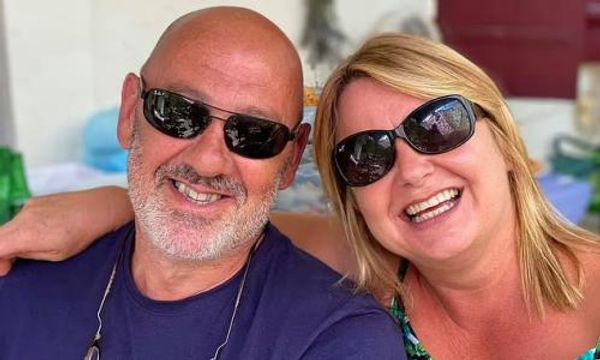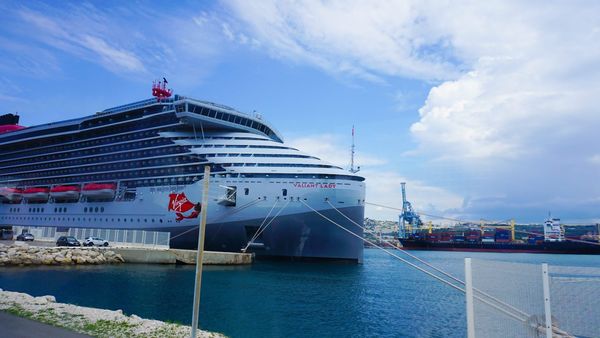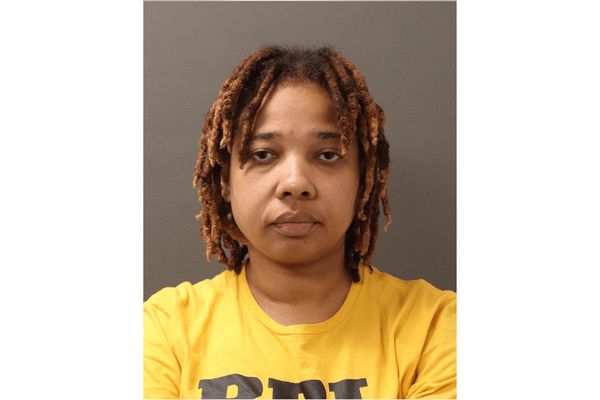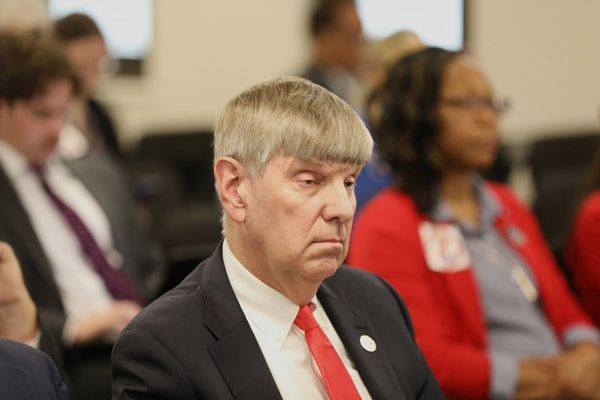
Wading into the warm, crystal-clear water at the northern end of Melbourne’s Port Phillip Bay – bearing flippers, a snorkel and a mask – a colourful underwater wonderland teeming with life opens up just metres from the shoreline.
Within a few minutes, we spot a tiny headshield slug and a pygmy squid (the smallest known species of squid in the world). A little further out at the popular Ricketts Point snorkelling spot in Boonwurrung country, we found ourselves floating above a southern fiddler ray (also known as a banjo shark) nestling in the sea grasses and subtidal reef below.
Despite the city’s often maligned surf, snorkelling in and around Melbourne has gained popularity in recent years as more people become aware of the remarkable diversity of sea life in one of the marine protected parks within Port Phillip Bay’s 2,000 km².
The most important is Ricketts Point marine reserve, which is safe for beginners and offers the chance to see many other species including Port Jackson sharks, potbelly seahorses, zebrafish and many others.
“I honestly had never thought that there would be such good snorkelling opportunities in Port Phillip Bay,” says Kathi Herrick, who moved to St Kilda in Melbourne’s south-east bayside from Sydney four years ago.
Herrick says she appreciates having marine parks so close to both the CBD and residential areas. “That means no jetskis, boats or spear fishing is allowed here, making it a very safe and beautiful underwater experience. The exciting thing is you never know what you might see.
“I saw my first seahorse only the other day and a beautiful angel ray gliding along beside me.”
Herrick says she was first introduced to snorkelling while roller skating on Princes pier, where she met a man who encouraged her to join the Snorkelling Naarm (Melbourne, Victoria) Facebook page.
Julie Everett, the page’s founder, says the group has seen rapid expansion in the past few years as more Melburnians take to the water.
“Pre-Covid, we only had 1,500 members; then during lockdowns, that more than tripled as people started exploring their own back yards.”
The group has now grown to almost 20,000 members. “A lot of people aren’t aware of the sea life in Port Phillip Bay and once they discover it, it kind of becomes a bit addictive,” she says.
Although Ricketts Point is the most popular spot, great snorkelling can also be had at Jawbone marine sanctuary in Williamstown (home to spotted pipefish, dusky morwong, eastern shovelnose stingaree and others), the Blairgowrie pier (where you can see decorator and giant spider crabs) and the Portsea pier (look out for smooth rays and weedy sea dragons). A little further afield is the Mushroom Reef marine sanctuary near Flinders (look out for southern eagle ray and Australian barracuda).
Simon Mustoe, author of A Beginners Guide to Snorkelling Around Melbourne, says Melbourne offers the rare chance to explore some of the most protected snorkelling sites on earth, with a diversity of sea life said to rival that of the Great Barrier Reef.
He says with a simple mask, snorkel, fins and less than a metre of water, you can see the most remarkable things in close proximity to the CBD.
“Melbourne has a more active snorkelling scene than Sydney,” Mustoe says. “It surprises people how abundant and diverse it is just beneath the water. People are increasingly looking for a window into the natural world which we don’t get from work and news.”
He says that every time he goes snorkelling he sees something remarkable that he hadn’t expected to see. The best experience, he says, can be gained staying shallow and moving slowly and gracefully through the water so as not to frighten the sea life.
“The world’s largest seahorse, the big-belly, lives commonly in the shallows where there is colourful coral that’s taken hundreds of years to grow. I’ve picked up 5 million-year-old fossil shark teeth. The most beautiful, iconic and completely harmless pregnant female fiddler rays rest in the seagrass in no more than a few tens of centimetres.”
Victoria’s marine waters host many more unique species, and the southern seas host the world’s greatest diversity of of red and brown seaweed, according to Shannon Hurley, a nature campaigner with the Victorian National Parks Association. But only 5% of Victorian waters are protected, despite international benchmarks urging 30% protection.
“The government is still missing in action when it comes to protection. Our marine waters require dedicated management from agencies like Parks Victoria, with more areas needing protection for future preservation,” Hurley says.
Mustoe says it will only be once we appreciate the living ecosystems in Port Phillip Bay’s marine parks that they will be likely to be sustained and expanded. “Snorkelling is a way to connect with nature and literally immerse ourselves, removing daily inhibitions and improving our mental health,” he ays.
“As more and more people connect with nature, communities are beginning to find new ways to protect and restore these values.”
For Kathi Herrick, one of the best things about snorkelling is the ease with which anyone can take it up and reap the rewards. “Snorkelling requires minimal equipment, it’s a lovely way to connect with nature and it is not competitive.
“It is a way to experience peace and awe of nature while respecting the environment – look but don’t touch!”







